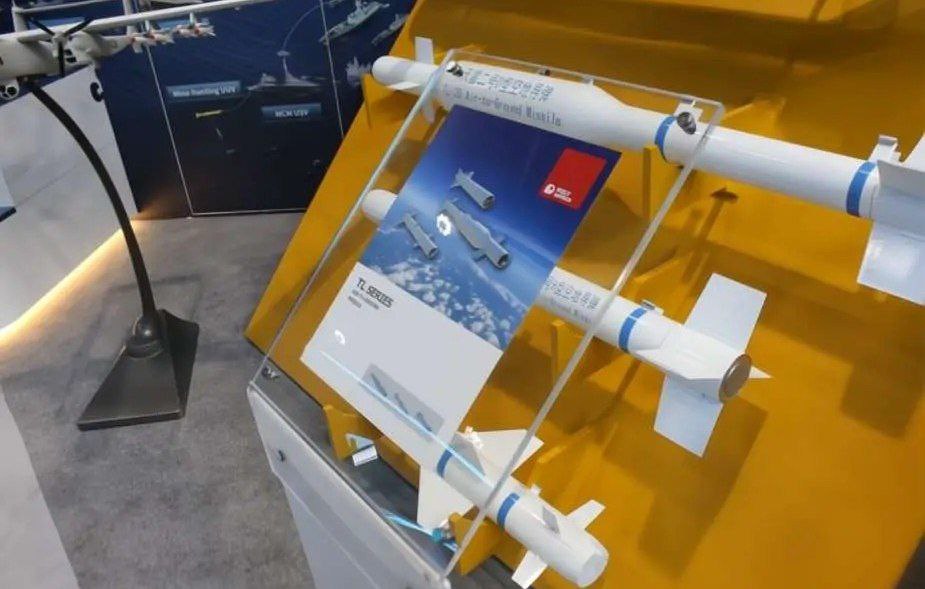The Chinese defense industry has revealed a ground attack munition, which can reportedly also be launched from the internal weapons hold of “stealth fighters like the J-20.”
The TL-20 family of precision ground-strike munitions was revealed at the UMEX 2024 defense exhibition in Abu Dhabi, which also appears to be capable of being launched from other aircraft against light and unhardened ground targets.
While the weapon must have certainly been designed to be compatible with the J-20, the suggestion that the jet, too, has been envisaged for a ground attack role would be the first.
The J-20 is primarily a pure air superiority/air dominance fighter, providing advanced electronic reconnaissance and surveillance enabled by powerful data processing and sensor fusion technologies.
Its future is envisaged as a ‘system of systems’ controlling other unmanned systems and directing manned aerial platforms as a tactical airborne command and control.
Interestingly, the weapon is strikingly similar in design and capability to the GBU-53/B Stormbreaker gliding bomb, designed to be operated from the F-35 beside other US fighters. The missile can also be used from the Hongdu L-15 Falcon, also known as the JL-10.
‘Can be Operated From Stealth Fighters’
According to a post on X by ‘mog_china,’ a leading handle that reports on a variety of Chinese issues, the TL-20 has been designed by Poly Technologies and is also referred to as the Tianlong-20.
“It is designed for use in the compact bomb bay of stealth aircraft and has a maximum firing range of 85 to 95 km at an airspeed of Mach 0.9,” the post said.
Curiously, it has been referred to as an “air-to-surface missile” despite the design configuration and the description of its tactical use suggesting it is a glide bomb. It is 1.8 meters long with folded wings, 0.22 meters wide, and 0.24 meters high, which “allows” it to be placed in the weapons bay of the Chinese Jian-20 fighter.

The J-20 has three internal concealed weapons bays, one in the underbelly that can carry four PL-15 beyond-visual-range (BVR) missiles and one each on the side of the engine that has been seen carrying one PL-10.
Assuming People’s Liberation Army Air Force (PLAAF) planners do adopt the J-20 for ground strike roles, it would be difficult to fire the TL-20 from the side bays since air-to-ground munitions are always dropped in a downward direction.
The J-20’s side bays’ unique launch mechanism also might not support a heavier ground strike bomb. The rails carrying the PL-10 roll out when the doors open and close again, with the missile remaining exposed on the rails, ready to be fired for within visual range (WVR) dogfights.
Thus, the only weapons bay can be the central ventral bay, “which is 4 meters long and 2 meters wide” and can accommodate the TL-20. “It can carry up to 12 TL-20 missiles in total while maintaining the fighter’s stealth characteristics, “a key element in targeting Taiwan’s military assets,” according to reports.
Bomb’s Capabilities
The TL-20 is guided by satellite navigation (SATNAV) linked to China’s Beidou constellation, inertial guidance, and advanced “target recognition.” It can “differentiate between various ground vehicles, such as tracked and wheeled armored vehicles, to minimize collateral damage.”
This ensures accuracy and target engagement in strong electronic warfare (EW) and jamming scenarios. The missile’s guidance head also “integrates infrared and millimeter-wave radars.” The report identified the Quzhou Airport in China’s Zhejiang province as one that could possibly host TL-20-armed J-20s.
The JL-10, the other aircraft identified to use the TL-20, is primarily a supersonic advanced jet trainer with a secondary light ground attack capability. It has four underwing and three wingtip hardpoints for various weapons, including short-range air-to-air missiles, air-to-ground missiles, bombs, and rocket pods.
- The author can be reached at satamp@gmail.com
- Follow EurAsian Times on Google News